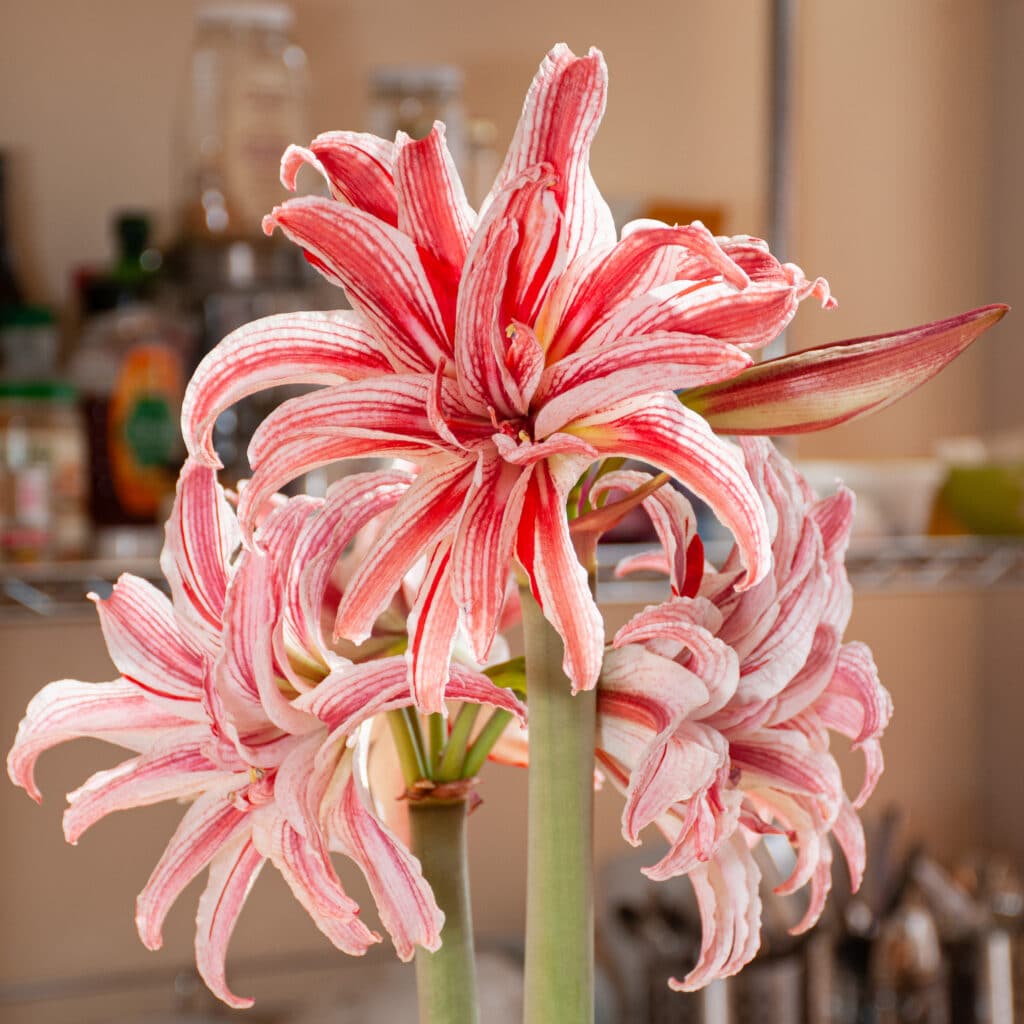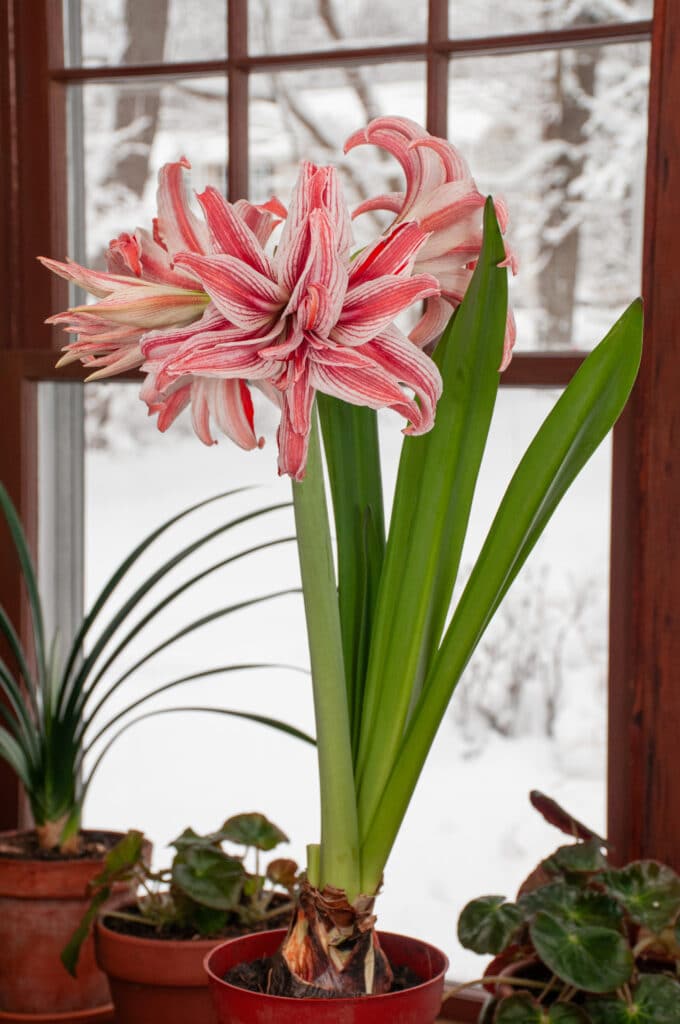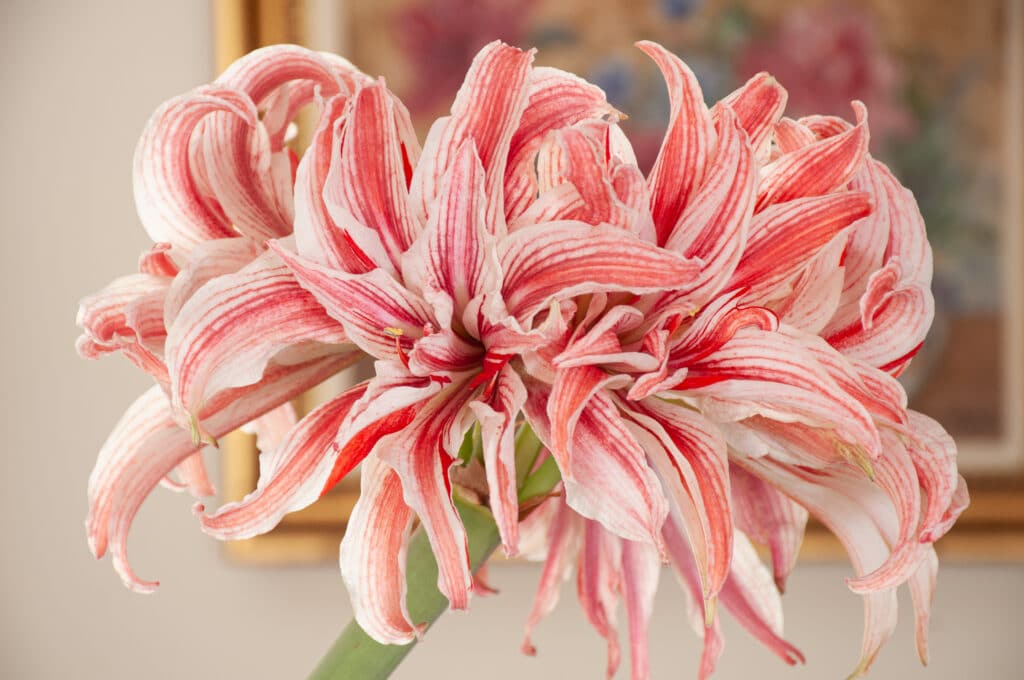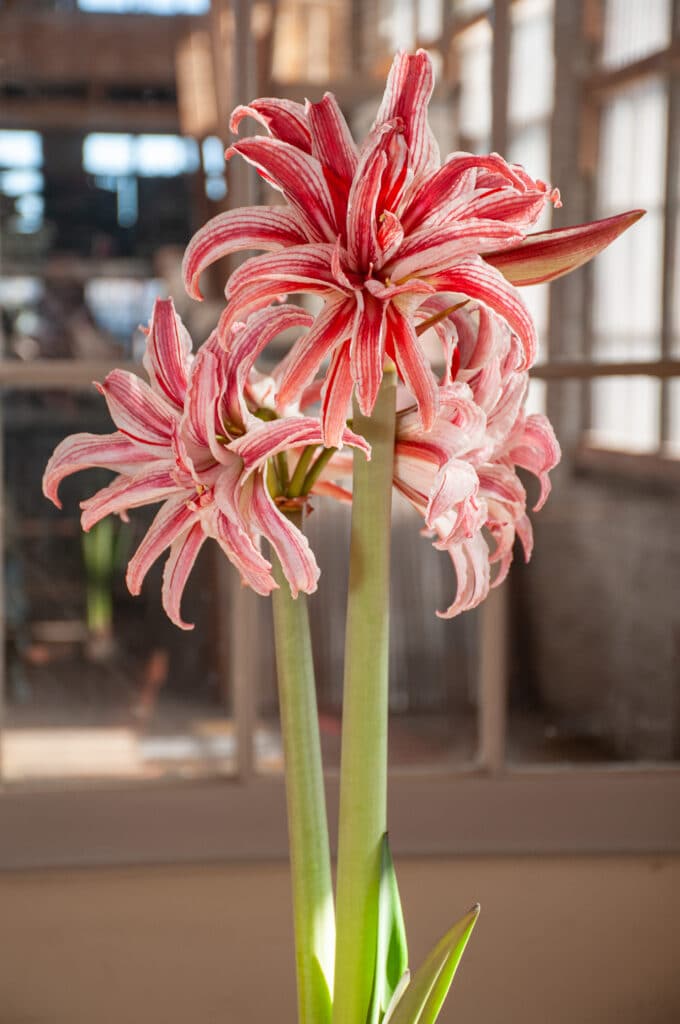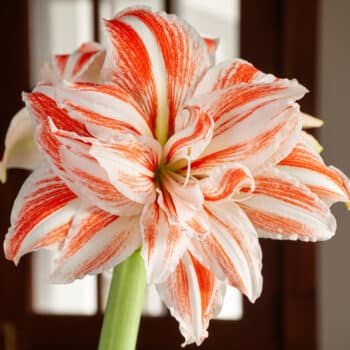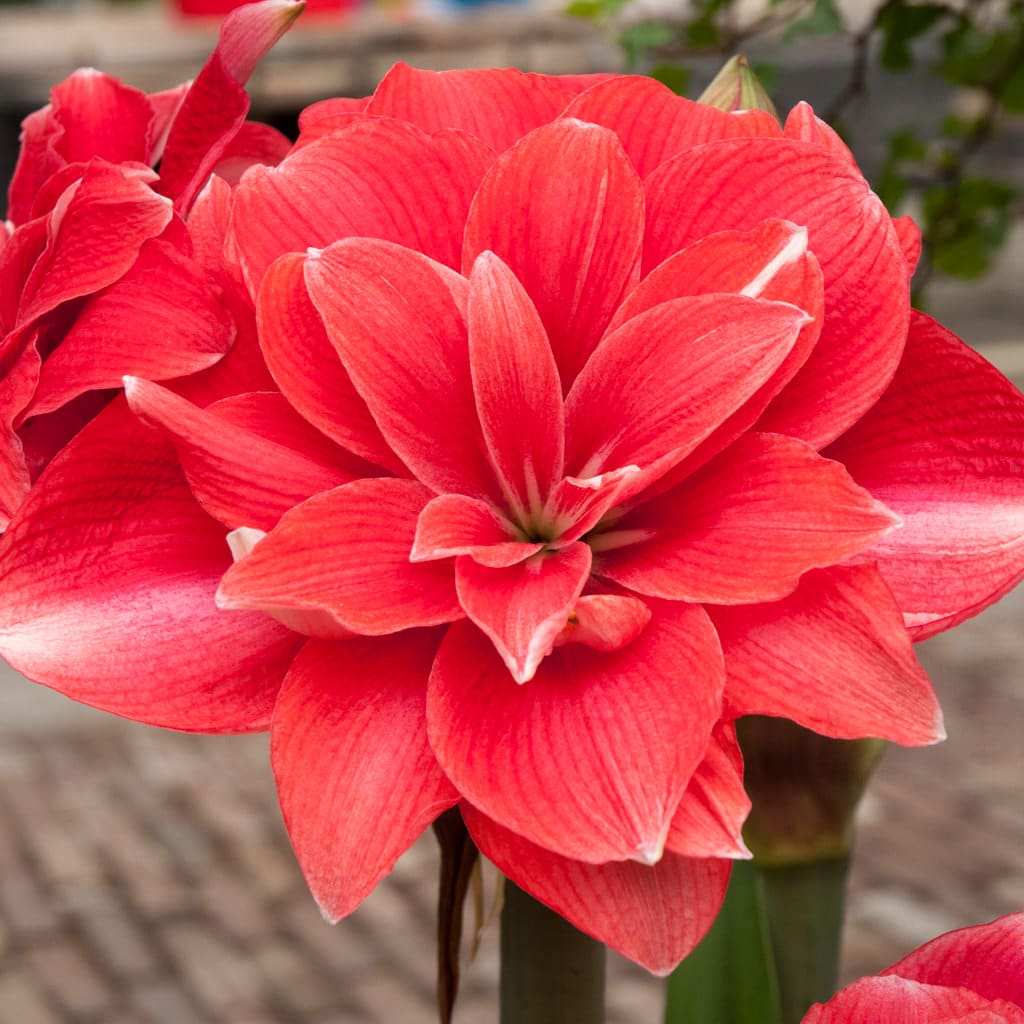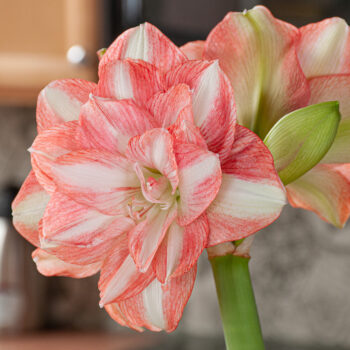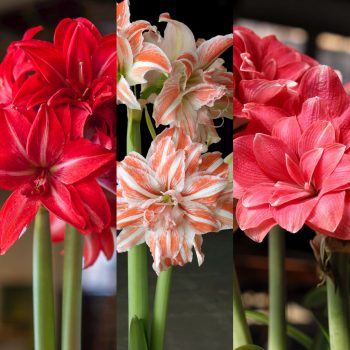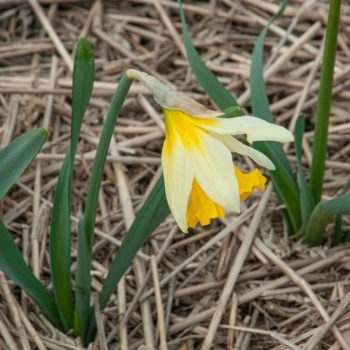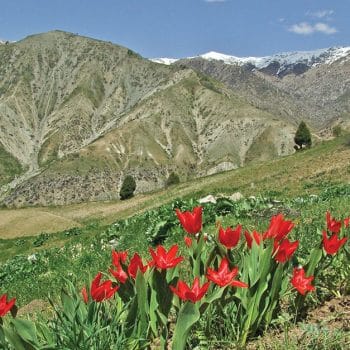Doublet Amaryllis
Hippeastrum
Specifications
Catchy name. Extraordinary flowers. They consist of a multitude of narrow, reflexed petals that are cream overlaid with a red that starts warm and ends cool. It’s hard to become jaded where amaryllises are concerned, but if you if you feel as though you’ve seen it all, Doublet will make you sit up straight.
Allow 12 weeks from potting to bloom. Most bulbs will not flower until after Christmas.
Amaryllises are not available for shipment until late October. If you are also ordering outdoor bulbs and need the outdoor bulbs earlier, please place two separate orders.
| Item # | 7095 |
| Height | 20—30 inches |
| Flower Color | Red and Cream |
| Bulb Size |
32-34cm ?
Bulb size is determined by the circumference around the largest part of the bulb. Colorblends only delivers top size bulbs. Large bulbs produce more or larger flowers than small bulbs.
|
| USDA Zones |
8b—10b ?
Hardy in USDA zones 8b to 10b in the South or 10b on the West Coast.
|
| Bloom Time | Indoor |
Delivery & Planting Times
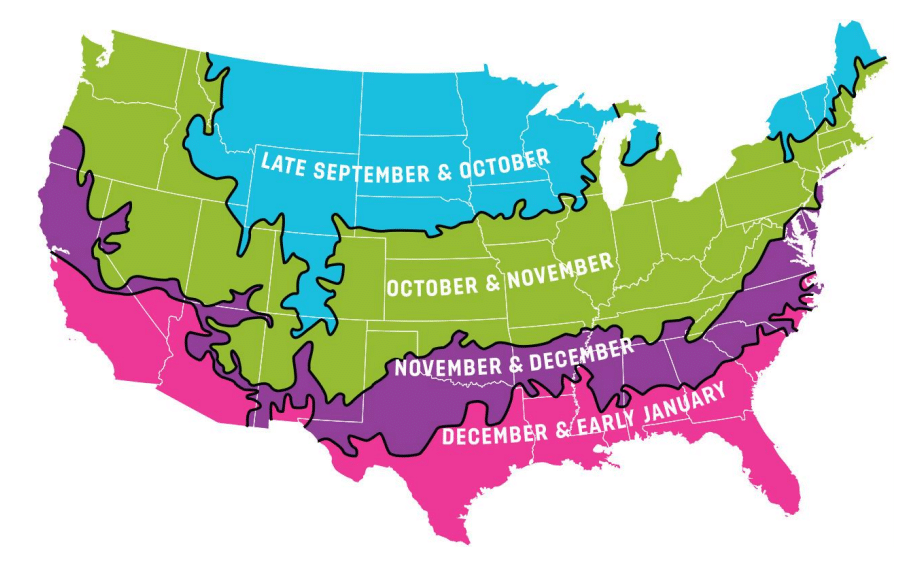
Spring-flowering bulbs must be planted in the fall. They need cool soil to make roots before the onset of winter. Cool fall weather arrives at different times from north to south and from high elevations to low.
Please note that the temperature of the soil lags behind the air temperature. You can generally plant later than the windows provided in this map. As long as the ground is not frozen, you can still plant.
Doublet Amaryllis
Hippeastrum
Catchy name. Extraordinary flowers. They consist of a multitude of narrow, reflexed petals that are cream overlaid with a red that starts warm and ends cool. It’s hard to become jaded where amaryllises are concerned, but if you if you feel as though you’ve seen it all, Doublet will make you sit up straight.
Allow 12 weeks from potting to bloom. Most bulbs will not flower until after Christmas.
Amaryllises are not available for shipment until late October. If you are also ordering outdoor bulbs and need the outdoor bulbs earlier, please place two separate orders.
| Item # | 7095 |
| Height | 20—30 inches |
| Flower Color | Red and Cream |
| Bulb Size |
32-34cm ?
Bulb size is determined by the circumference around the largest part of the bulb. Colorblends only delivers top size bulbs. Large bulbs produce more or larger flowers than small bulbs.
|
| USDA Zones |
8b—10b ?
Hardy in USDA zones 8b to 10b in the South or 10b on the West Coast.
|
| Bloom Time | Indoor |
Bulb Calculator
To find the number of bulbs you need, enter the square footage of the planting area in the box below.
Area
Square Feet
Density
Bulbs/sq. ft.
Bulbs Needed
When to Plant

Spring-flowering bulbs must be planted in the fall. They need cool soil to make roots before the onset of winter. Cool fall weather arrives at different times from north to south and from high elevations to low.
Please note that the temperature of the soil lags behind the air temperature. You can generally plant later than the windows provided in this map. As long as the ground is not frozen, you can still plant.
Planting Instructions
Except where winters are very mild, amaryllis bulbs must be grown indoors in containers. Complete growing instructions are provided in our Planting & Care Instructions (PDF). A paper copy of the instructions is enclosed with every order.
In mild-winter areas (USDA Zone 8b and warmer), bulbs can be planted outdoors. They perform best in partial shade and require well-drained soil. They may need irrigation in dry climates. Once established, they typically bloom in the spring.
Planting Instructions
Except where winters are very mild, amaryllis bulbs must be grown indoors in containers. Complete growing instructions are provided in our Planting & Care Instructions (PDF). A paper copy of the instructions is enclosed with every order.
In mild-winter areas (USDA Zone 8b and warmer), bulbs can be planted outdoors. They perform best in partial shade and require well-drained soil. They may need irrigation in dry climates. Once established, they typically bloom in the spring.


